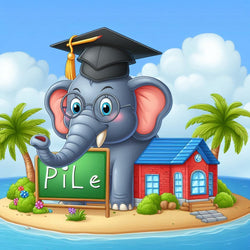"Pilay" activities are recommended for the teacher
|
|
The name of the game is "Pilay" |
Description of the activity |
|
1 |
for all games |
Find your partner/ your group. |
|
2 |
all games |
to get along in order in order. From big to small or vice versa. |
|
3 |
numerical value of the 22 letters + Hebrew letters |
Place the cards in a row. The student will stand behind the appropriate letter. According to instruction: the first / last / final letter of a given name. |
|
4 |
numerical value of the 22 letters + Hebrew letters |
Distribute the letter cards to the students. The student will write a word on a note according to the opening letter he has - according to the instruction/question: What is your favorite food?/hobby/movie/topic for the group's choice. (For example: the student received the letter S, so he will write salad (favorite food). |
|
5 |
numerical value of the 22 letters
|
Spelling a word/sentence according to instruction: the name of the youngest child/adult in the group/topic studied/name of the school/selection of a word by a student with the teacher's approval. |
|
6 |
The letter game |
Calculation of the geometrical value of names. The students are in a group/pair/class. |
|
7 |
Suitable for all games |
Collecting suitable cards (face up) with one hand in a limited time (possible in rounds of participants: 20/10/50 seconds..) according to instruction: denominator/numerator/final letters, script/pattern letters. Estimation: an equal /smaller/larger fraction pays/half/an imaginary/mixed fraction |
|
8 |
fourth quarters (different names for the fracture) |
live game The goal: collect as many fours as possible. Each student has a hidden card (only the group members are allowed to see the card). Divide into 2 groups. Start with 4 students in a group. The first group asks for a card to complete a foursome. If the opposing team has the requested card then the owner of the card moves to sit with the team. If not - then a new card holder joins the group. And the turn goes to the other group. At each stage there must be at least 4 card holders in the group - so when there is a shortage - a new card holder joins. When a team has collected a four, it shows it to the opposing team. |
|
9 |
-The letter game- who is bigger? - All the memory games |
Cooperative goal: until we become one group. without time limit. Or, competitive goal: standing in 2 columns. 2 teams - one against the other. Check the numerical value of the letter. Whoever is smaller moves to the second group. |
|
10 |
- The letter game ("War" game - who is bigger?) - All the memory games |
A shared-group memory game. The goal: collect as many pairs of cards as possible in a limited time. You can also make a competition between 2 students at a time. Place the cards face down on the surface. 2 cards are turned over at a time - if a pair is found then it is kept, if not, then the cards are turned over and the turn moves on. |
|
11 |
- letter game - who is bigger? -Any memory game |
A "living" memory game. All students receive a card. Except for 2 players. who must collect as many pairs of matching cards as possible. You are allowed to reveal only 2 cards in a row. If a pair of matching cards were revealed - then the owners of the cards give them the card/ move to the side of the player who revealed them. The challenge: to remember the place of the cards that have already been revealed. |
|
12 |
All the games |
Game "I call ___" Each participant receives a card. Write the names of the dealt cards on the board. The teacher/in charge of the board starts a game: "I call ___" (a third/the letter A...). The participant who has the card with the announced name - immediately stands up/ picks up the card and announces: I have the... the fraction one third/ the letter A... the person in charge of the board circles the name of the announced card: one third/ the letter A... the participant who announced, Now "I call ___" who has a card name that was not circled and asks where half/ two eighths/ the letter K is... If a participant does not respond to hearing the name of his card, then the person in charge of the board gets a point. Or divide the board into 2 groups. And if a participant does not respond, then the opposing team gets a point. |
|
13 |
All arithmetic games |
Educational activity number 1 in calculus: Identifying and presenting the fraction in 3 steps: 1. Illustration. 2. Symbol. 3. Writing. Each participant receives a card. On the table, the participant will illustrate the fraction shown on the card. In the notebook, the participant will draw a picture suitable for the fraction. and copy the fraction in numerical representation. |
|
14 |
"Together we are whole" Adding fractions with equal denominators. |
Educational activity number 2 in the account: each participant receives a card. Each participant must locate his partner: matching 2 fractions that together are a whole. The participants who met, sat together and presented the exercise by means of illustration. The participants will draw a picture suitable for the exercise. The participants will write a connection exercise for their 2 cards (having a common denominator) for example:= 3/8+5/8 is also possible by placing the exercise only. without a requirement for a solution. |
